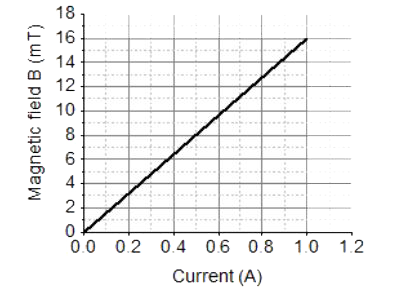In the given diagram, when the magnet is pushed into the solenoid, the pointer of the galvanometer deflects slightly to the left.

Which of the following changes would cause the pointer to deflect through a larger angle?
Move the magnet faster.
Move the magnet away from the solenoid.
Unwind some of the turns of the solenoid.
Keep the magnet stationary.
On moving the magnet faster, the change in net magnetic field associated with the solenoid will be faster and hence more e.m.f. will be induced.
Topper's Solved these Questions
Similar Questions
A coil is connected to a galvanometer. When the N-pole of a magnet is pushed into the coil, the galvanometer deflected to the right. What deflection, if any , is observed when:
(a) the N-pole is removed ?
(b) the S-pole is inserted ?
(c) the magnet is at rest in the coil ?
State three ways of increasing the deflection on the galvanometer.
View Solution
In the above diagram light is travelling through different media. It is noted by a scientist that ∠1= ∠3=∠4 but ∠2<∠1. Which of the following statement would be correct?
View Solution
Knowledge Check
Coils P and Q each have a large number of turns of insulated wire. When switch S is closed, the pointer of galvanometer G is deflected toward the left (as shown in the following figure). With Snow closed, to make the pointer of G deflect toward the right one could
 AMove the slide of the rheostat R quickly to the rightBMove coil P toward coil QCMove coil Q toward coil PDOpen S
AMove the slide of the rheostat R quickly to the rightBMove coil P toward coil QCMove coil Q toward coil PDOpen SWhich of the following when added to 35 mL of the 1.0 M solution of KOH would cause largest change in pH ?
A25 mL of 1.0 M HClB25 mL of 0.2 M HClC25 mL of 0.5 M HClD25 mL distilled water.
In the above diagram light I travelling through different media. It is noted by a scientist that ∠a=∠3=∠4 but ∠2<∠1.
Which of the following statement would be correct ?AMedium 1 is the denser than medium 3 but it's density is equal to medium 2.BMedium 2 is the rarest medium.CMedium 3 is denser than medium 1,DMedium 1 and 3 are essentially the same medium, but medium 2 is denser than 1 and 3.
The metallic pointer of a plotting compass gets deflected only when it is placed near a bar magnet because the pointer has :
View SolutionIn the given figure, when galvanometer shows no deflection, the current (in ampere) flowing through 5Ω resistance will be

View SolutionA solenoid is a long helical coil of wire through which a current is run in order to create a magnetic field. The magnetic field of the solenoid is the superposition of the fields due to the current through each coil. It is nearly uniform inside the solenoid and close to zero outside and is similar to the field of a bar magnet having a north pole at one end and a south pole at the other depending upon the direction of current flow. The magnetic field produced in the solenoid is dependent on a few factors such as, the current in the coil, number of turns per unit length etc. The following graph is obtained by a researcher while doing an experiment to see the variation of the magnetic field with respect to the current in the solenoid. The unit of magnetic field as given in the graph attached is in milli-Tesla (mT) and the current is given in Ampere.

. a straight current carrying conductor
I. The magnetic field produced by the solenoid is inversely proportional to the current
II. The magnetic field produced by the solenoid is directly proportional to the current.
III. The magnetic field produced by the solenoid is directly proportional to square of the current.
IV. The magnetic field produced by the solenoid is independent of the current.
Choose from the following which of the following would be the correct statement(s).
View SolutionThe north pole of a long bar magnet was pushed slowly into a short solenoid connected to a galvanometer. The magnet was held stationery for a few seconds with the north pole in the middle of the solenoid and then withdrawn rapidly. The maximum deflection of the galvanometer was observed when the magnet was :
View SolutionThe north pole of a long bar magnet was pushed slowly into a short solenoid connected to a galvanmeter. The magnet was held stationary for a few seconds with the north pole in the middle of the solenoid and then withdrawn repidly. The maximum deflection of the galvanometer was observed when the magnet was
View Solution

